Psilocybin, the psychoactive compound found in magic mushrooms, has a rich history of traditional use and modern fascination. This naturally occurring substance has gained significant attention for its potential therapeutic benefits and its role in shaping human culture and consciousness. In this blog post, we will delve into the origins of magic mushrooms, their pharmacological properties, and their impact on society over time.
The Origins of Magic Mushrooms

Magic mushrooms, or psilocybin-containing mushrooms, have been used by various cultures throughout history, particularly in Central and South America. The indigenous peoples of Mesoamerica, such as the Aztecs and the Mazatecs, have used these mushrooms for centuries in spiritual and healing practices. In their native languages, they referred to them as "teonanácatl" and "nti-xi-tho," both of which translate to "flesh of the gods" or "divine mushrooms."
Psilocybin was first isolated in 1958 by Swiss chemist Dr. Albert Hofmann, the same scientist who discovered LSD. He extracted the compound from Psilocybe mexicana, a species of mushroom native to Mexico. Since then, over 200 species of psilocybin-containing mushrooms have been identified worldwide.
Pharmacology of Psilocybin

Psilocybin is a tryptamine alkaloid that closely resembles the neurotransmitter serotonin in its molecular structure. When ingested, psilocybin is rapidly converted into its active form, psilocin, which acts as a partial agonist at serotonin 5-HT2A receptors. The activation of these receptors results in the characteristic changes in perception, cognition, and emotion experienced during a magic mushroom trip.
Typical doses of dried magic mushrooms range from 1 to 3 grams, with the onset of effects usually occurring within 30 to 60 minutes after ingestion. The experience typically lasts between 4 to 6 hours, depending on factors such as dosage, individual sensitivity, and mushroom species.
The Psilocybin Experience

The effects of psilocybin can vary greatly depending on the individual and the context in which it is consumed. Common experiences include visual and auditory hallucinations, feelings of interconnectedness, and profound insights into personal thoughts and emotions. Users often report a heightened sense of wonder and appreciation for nature, as well as a deep sense of spiritual connection.
However, as with other psychedelics, psilocybin can also lead to challenging experiences, sometimes referred to as "bad trips." These episodes may involve intense anxiety, paranoia, and disturbing hallucinations, which can result in long-lasting psychological distress.
Magic Mushrooms and Modern Culture
Magic mushrooms gained widespread popularity in the 1960s and 1970s as part of the counterculture movement. Writers such as Terence McKenna and Robert Anton Wilson advocated for the use of psilocybin mushrooms as a means of exploring consciousness and promoting personal growth. Their influence contributed to the growing interest in psychedelics, which eventually led to the criminalization of magic mushrooms in many countries.
The Psychedelic Renaissance and Psilocybin Research

In recent years, there has been a resurgence of interest in the potential therapeutic uses of psychedelics, including psilocybin. Researchers have begun to explore its potential to treat conditions such as anxiety, depression, PTSD, and addiction. Preliminary studies have shown promising results, with clinical trials suggesting that psilocybin-assisted therapy may provide significant benefits for individuals suffering from mental health issues.
The enigmatic history and pharmacology of psilocybin and magic mushrooms continue to captivate researchers, therapists, and enthusiasts alike. From their ancient roots in traditional healing practices to their modern resurgence in scientific research, magic mushrooms have played a significant role in shaping our understanding of the human mind and its vast potential. As we continue to explore the therapeutic benefits and transformative experiences offered by psilocybin, we are reminded of the importance of maintaining an open-minded and curious approach to these natural allies. The future of psilocybin research promises to unlock new insights into the depths of human consciousness and provide novel avenues for healing and personal growth.
Sources:
- Hofmann, A., Heim, R., Brack, A., & Kobel, H. (1958). Psilocybin, a psychotropic substance from the Mexican sacred mushroom. Experientia, 14(3), 107-109.
- McKenna, T. (1992). Food of the Gods: The Search for the Original Tree of Knowledge. Bantam Books.
- Guzmán, G. (2008). Hallucinogenic mushrooms in Mexico: An overview. Economic Botany, 62(3), 404-412.
- Nichols, D. E. (2016). Psychedelics. Pharmacological Reviews, 68(2), 264-355.
- Carhart-Harris, R. L., Bolstridge, M., Rucker, J., Day, C. M. J., Erritzoe, D., Kaelen, M., ... & Nutt, D. J. (2016). Psilocybin with psychological support for treatment-resistant depression: An open-label feasibility study. The Lancet Psychiatry, 3(7), 619-627.
- Griffiths, R. R., Johnson, M. W., Carducci, M. A., Umbricht, A., Richards, W. A., Richards, B. D., ... & Klinedinst, M. A. (2016). Psilocybin produces substantial and sustained decreases in depression and anxiety in patients with life-threatening cancer: A randomized double-blind trial. Journal of Psychopharmacology, 30(12), 1181-1197.






0 Comments